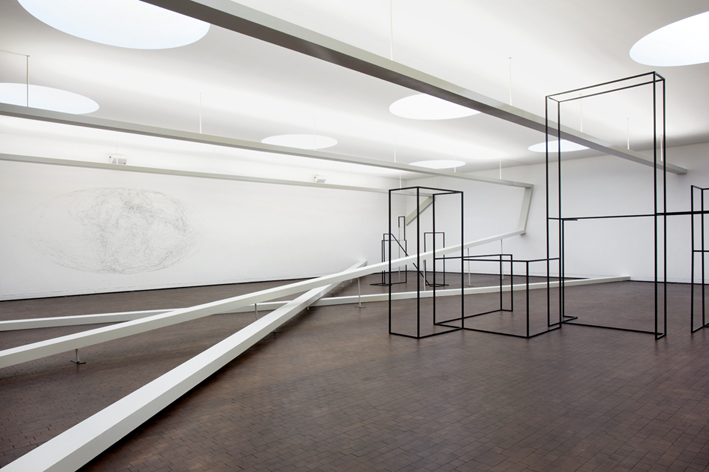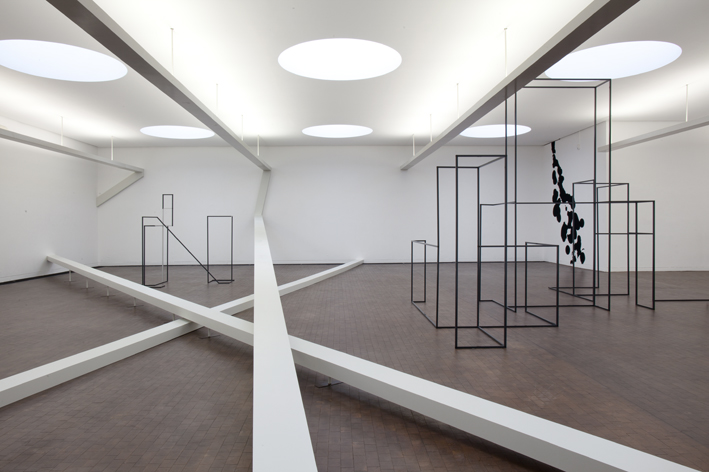vorwaerts nach weit | Kubus Hannover
|
Site specific installation with Kati Gausmann and Alexandra Schumacher
 Photos: Astrid Busch
Vorwärts nach weit or the space inside space Ammon seizes on the existing light housings as sculptural/spatial elements. Suspended from the ceiling, they run below it in parallel lines, ending at the walls. Ammon, however, extends them and disperses them through the room in various directions, down the walls and across the floor, where they cross, diverge and end indeterminately. This also alters the sight lines built into the architecture of the space: The gaze is guided in directions that deviate from the architectural concept behind the space, dismantling its very structure. Thus Ammon directs the gaze that follows the existing channels out of those channels and into indeterminacy. But what we see there is not nothing; it is, once again, the other two artists’ sculptures or drawings, and Ammon refers our experience of that which is to be experienced back to them: the condensation of time and space in Gausmann’s drawings and the origins of the spatial in Schumacher’s sculptures. All three artists take as their subject the unbound nature of the human gaze, of human perception in the condensation of time and space, in the dismantling of space and the dismantling of perspective. At the same time, however, this experience of the unbound gaze remains bound to the objects that enabled it. The freedom of the aesthetic gaze is defined not in a vacuum, but rather in grappling with space, in working with it and on it. It is only through the sculptures, through the experience of their material contingency, that our gaze is directed to space as an aesthetic and artistic concept in the Kubus as an architectural and museum space.
|








